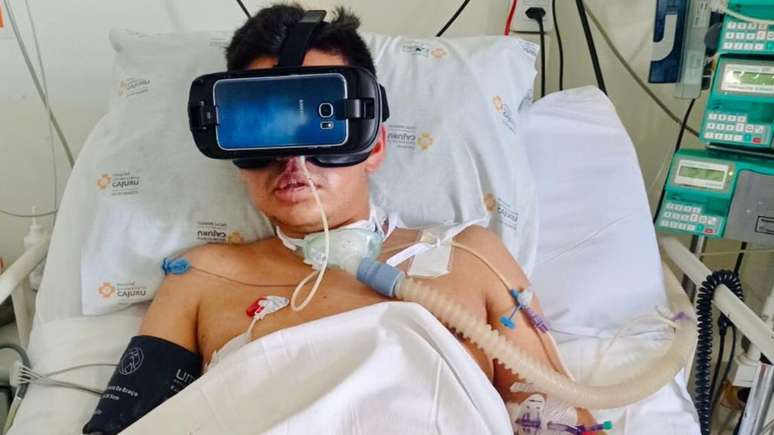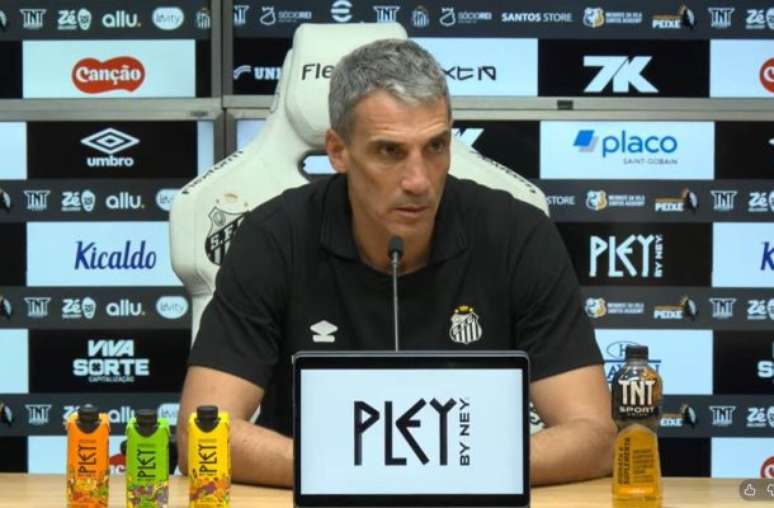Faced with serious health conditions, professionals join forces with a multidisciplinary team and find initiatives and technologies to humanize care
Every day they are dedicated to evaluating hospitalized patients, analyzing laboratory tests and demographic data, as well as verifying the need for mechanical ventilation. Situations like this are repeated in the daily routine of intensive care unit (ICU) physiotherapists, who add effort to care for patients and allow for rapid recovery through body movements.
html[data-range=”xlarge”] figure image img.img-582b94642305aaafb3e48cb439a84458a2p6iqgb { width: 774px; height: 435px; }HTML[data-range=”large”] figure image img.img-582b94642305aaafb3e48cb439a84458a2p6iqgb { width: 548px; height: 308px; }HTML[data-range=”small”] figure image img.img-582b94642305aaafb3e48cb439a84458a2p6iqgb, html[data-range=”medium”] figure image img.img-582b94642305aaafb3e48cb439a84458a2p6iqgb { width: 564px; height: 317px; }
Anyone who is challenged to take small steps, resume spontaneous breathing or relearn to eat needs to discover the courage to move forward in difficulty.
“The main objective is to restore functionality to the patient, making him fit again for basic daily functions and, above all, minimizing the risks of any sequelae”explains Raphael Horsesphysiotherapist Cajuru University Hospitalfrom Curitiba (PR).
Even in the face of a serious health condition, rehabilitation is always possible. And the hope lies in intensive physiotherapy, which plays the important role of improving general functional capacity and restoring the patient’s respiratory and physical independence, reducing the risk of complications related to bed rest. An extensive performance that has been very important in the pandemic, when it was extremely necessary in the treatment of the most delicate cases of covid-19.
“Let’s reduce suffering, provide more dignified treatment, and avoid sequelae with exercises that prevent cardiorespiratory complications, strengthen muscles, and increase lung capacity,” underlines Rafael Cavalli.
“With the support of individualized and assertive treatment, we have reduced length of stay, rates of readmission after discharge, duration of mechanical ventilation, use of oxygen therapy, rates of pneumonia and sequelae due to immobility “reports the physiotherapist, who works at the referral hospital for trauma care and 100% through the Unified Health System (SUS).
According to Cavalli, within an intensive care unit, all patients need specific physiotherapy care, since even neurological and cardiac complications directly affect the functionality of the human body. “But we can’t do anything ourselves, so we rely on professionals from different areas to join efforts and achieve results”scores.
Devices to stimulate patients in intensive care
In some cases, the pursuit of patient recovery goes hand-in-hand with technologies that seemed limited to leisure. An example are the virtual reality glasses that enter the corridors of hospitals, offices and laboratories to allow patients to feel immersed in a sort of fictitious existence.
“VR glasses can be used to help Parkinson’s disease patients get around, in physiotherapy for those who have suffered a stroke, and even to ease symptoms of depression”details physiotherapist Rafael Cavalli, who uses the technology during treatment at the Cajuru University Hospital.
The aim of the rehabilitation treatment is to stimulate muscle movements so that the patient creates motor memory. It is in this context, therefore, that virtual reality comes into play. An innovative tool in physiotherapy that has been used in the assessment and rehabilitation of people with movement, postural balance and gait disorders.
“Imagine a patient who has lost movement in some parts of the body and needs to undergo physiotherapy. What if these exercises could be facilitated using virtual reality scenarios?”asks the physical therapist.
At Marcelino Champagnat hospital, during the covid-19 pandemic, some professionals have also used their gifts and creativity to encourage patients to continue with their exercises.
the physiotherapist Bruna Endy Gasparin simulated a cleat in protective shoes, drawing the laces on the plasters, to encourage patients in the leg strengthening session.
Already Aloysio Lechenacoske he sang and recited poetry during periods of physiotherapy with patients. “Everything always very spontaneous, but we felt a tear in our eyes, a smile. I think that in a playful way we manage to translate the truth of life into hope, which is always believing and dreaming”, explains.
In addition to the movement of the body
Fundamental in the recovery of the most varied dysfunctions, physiotherapists work side by side with a multidisciplinary team made up of doctors, nurses, nutritionists, psychologists and theologians. By perceiving the patient more completely than the pathology, it is possible to address areas of health that go beyond medicine or physiotherapy, for example.
“When we bring together professionals from different areas and work together, we achieve an important mission: to take care of the patient in a humanized way, bringing him back to normal life”, says Dr. Ronnie Barreto Arrais Ykeda, general practitioner and palliative care worker at Cajuru University Hospital.
“Establishing therapeutic proportionality, based on the individuality of human beings and their life history, is a great challenge and an important virtue for anyone working in intensive care”, points out Ronnie, who is also coordinator of the hospital’s Palliative Care Commission.
According to the doctor, professionals who deal with patients in serious conditions in intensive care must evaluate each case on a case-by-case basis, understanding the extent to which medical intervention is acceptable, without prolonging suffering.
“Not everything that is technically possible is ethically acceptable. Even with medical advances, the discharge of patients from intensive care units does not always mean an improvement in the quality of life. Only with a humanized look can the team analyze the possible paths for each patient”concludes.
Source: Terra
Ben Stock is a lifestyle journalist and author at Gossipify. He writes about topics such as health, wellness, travel, food and home decor. He provides practical advice and inspiration to improve well-being, keeps readers up to date with latest lifestyle news and trends, known for his engaging writing style, in-depth analysis and unique perspectives.








